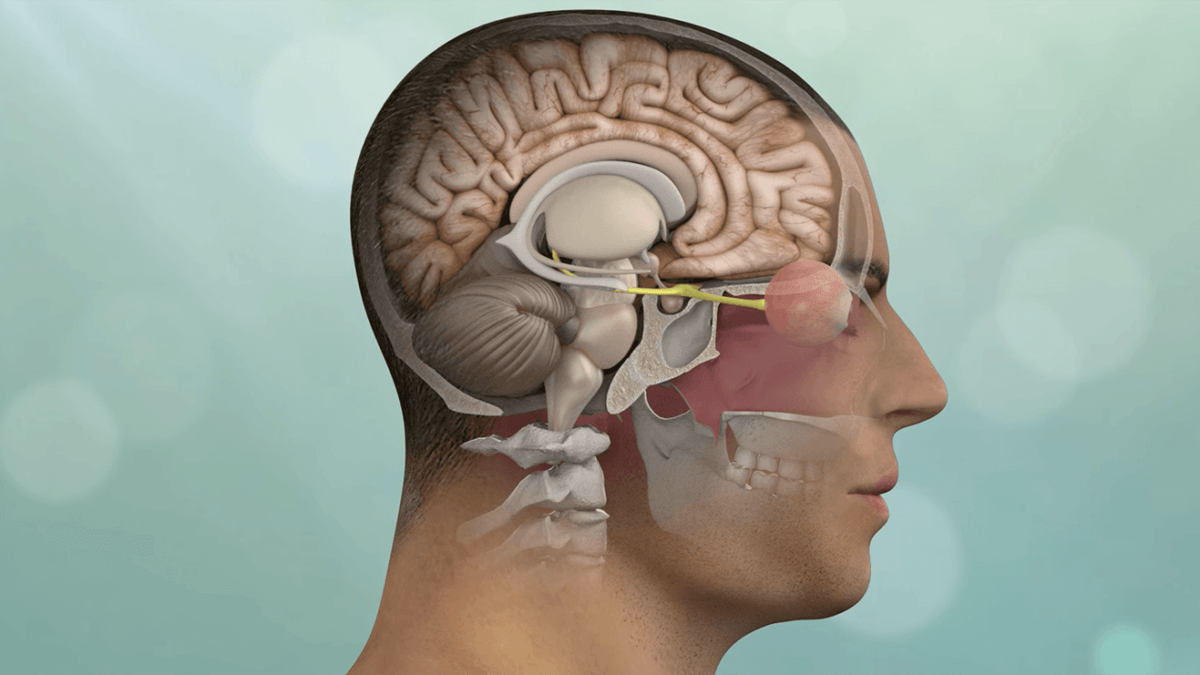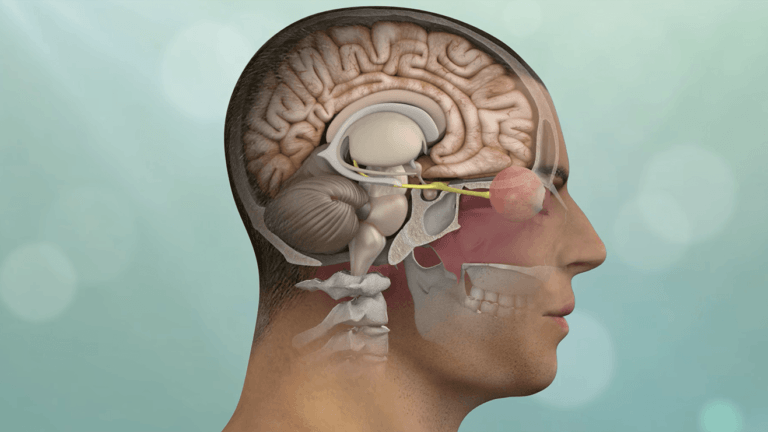
Brain and Skull Base Tumors
Brain & skull base tumors comprise a wide spectrum of tumor types
We treat all types of brain tumors with leading-edge technology and novel therapeutic approaches.
On this page: Overview | Types | Symptoms | Diagnosis | Treatment | Resources
What is a Brain Tumor?
The term brain tumor encompasses growths that are both benign (non-cancerous) and malignant (cancerous) originating from brain cells, tissues, and structures. Skull base tumors arise in the bony structures and coverings of the brain.
Facts About Brain Tumors
- An estimated 700,000 Americans are living with a primary brain tumor
- Approximately 70% of all brain tumors are benign
- Approximately 30% of all brain tumors are malignant
- Approximately 58% of all brain tumors occur in females
- Approximately 42% of all brain tumors occur in males
- An estimated 84,170 people will receive a primary brain tumor diagnosis in 2021
Reference: https://braintumor.org/brain-tumor-information/brain-tumor-facts/
Types of Brain Tumors
Brain tumors are usually classified into primary brain tumors (which include skull base tumors and pituitary tumors) and secondary (metastatic) brain tumors. Metastatic brain tumors arise from a cancer from elsewhere in the body. Skull base tumors may be primary (arising in that specific location) or metastatic in origin (arising from a cancer elsewhere).
Primary brain tumors
Primary brain tumors comprise a wide spectrum of benign and malignant neoplasms that may arise from:
- The coverings of the brain (meningiomas, epidermoid and arachnoid cysts)
- The brain itself (gliomas, astrocytomas, oligodendrogliomas, pineal tumors, lymphoma, hemangioblastoma)
- The nerves that exit the brain (schwannomas, neurofibromas), from the pituitary gland and related structures (pituitary adenomas, craniopharyngiomas, Rathke’s cleft cysts)
- The skull base (meningiomas, chordomas, schwannomas, olfactory neuroblastomas, sinus tumors)
It is estimated that there are at least 60,000 primary brain tumors diagnosed annually in the United States.
Metastatic brain tumors
Secondary brain tumors or metastatic brain tumors that arise from cancers elsewhere in the body are unfortunately common. They most often are seen in patients with cancers of the lung, breast, melanoma, colon, kidney and thyroid.
It is estimated that at least 10-30% of cancer patients develop brain metastases. In total, it is estimated that approximately 200,000 patients per year are diagnosed with metastatic brain tumors in the United States, most of which come from tumors arising.


Most symptomatic brain tumors and tumors of the skull base warrant surgical removal. Brain tumors that are malignant or cancerous typically require additional treatments such as chemotherapy, immunotherapy or focused radiation. Fortunately, most brain tumors can now be removed through one of several minimally invasive keyhole routes depending upon tumor location and size.
At Pacific Brain Tumor Center, in Santa Monica and Torrance CA, we have one of the world’s largest experiences in minimally invasive surgery and non-surgical treatment for such tumors, including novel therapies and clinical trials.
Brain Tumor Symptoms
Given their location, brain tumors and skull base tumors may produce a variety of symptoms including:
- Headache
- Facial pain
- Seizures
- Visual loss
- Double vision
- Weakness
- Fatigue
- Numbness
- Difficulty walking
- Incoordination
- Confusion and personality changes
Brain Tumor Diagnosis
Brain tumors and tumors of the skull base are best diagnosed by imaging studies, typically a magnetic resonance imaging (MRI) of the brain with gadolinium or a computer tomography (CT) scan of the brain.
Sometimes focused MRIs of the pituitary region, temporal bones, internal auditory canals or orbits may be needed to obtain better anatomical detail of a tumor.
Other tests may also be needed such as:
- Angiography (typically now performed as a CT angiogram or an MR angiogram)
- Magnetic resonance spectroscopy
- Positron emission tomography (PET)
- Visual field tests
- Audiograms
- Hormonal lab tests
Brain Tumor Treatment
The optimal treatment of patients with brain tumors is dependent upon several factors including the tumor type, location, symptoms, and overall health status of the patient.
Therapy may include:
- Minimally invasive keyhole surgery
- Stereotactic radiosurgery or radiation therapy
- Chemotherapy and/or hormonal therapies
Resources
- Surgery instructions
- Patient organizer (neuro-oncology)
- Patient stories
- For providers: Refer a patient
Meet Our Multidisciplinary Team
Our center experts are recognized as top neurosurgeons, ENT (head and neck – otolaryngology) surgeons, neuro-ophthalmologists, and neuro-oncologists in California and around the world, treating all types of benign and malignant brain and skull base tumors.
With innovative minimally invasive keyhole surgical approaches, novel targeted neuro-oncological treatments, stereotactic radiosurgery and clinical trials, we provide precision therapies aimed at safely and effectively transforming and sustaining our patients’ lives.
Brain Tumor Center Videos
 Keyhole Brain Tumor and Skull Base Surgery
Keyhole Brain Tumor and Skull Base Surgery
 Justine’s Story – metastatic melanoma
Experience an actual account of metastatic melanoma.
Justine’s Story – metastatic melanoma
Experience an actual account of metastatic melanoma.
 Our Brain Tumor Center
Our Brain Tumor Center
 Chris’ Story- Meningioma Brain Tumor
Experience and actual account of meningioma.
Chris’ Story- Meningioma Brain Tumor
Experience and actual account of meningioma.
 Man On A Mission
Dr. Santosh Kesari is on a mission to put an end to deadly brain cancers.
Man On A Mission
Dr. Santosh Kesari is on a mission to put an end to deadly brain cancers.
 Keyhole Brain Surgery
Keyhole Brain Surgery

Keyhole Brain Tumor and Skull Base Surgery

Justine’s Story | Metastatic Melanoma

Our Brain Tumor Center

Chris’ Story | Meningioma

Man On A Mission






